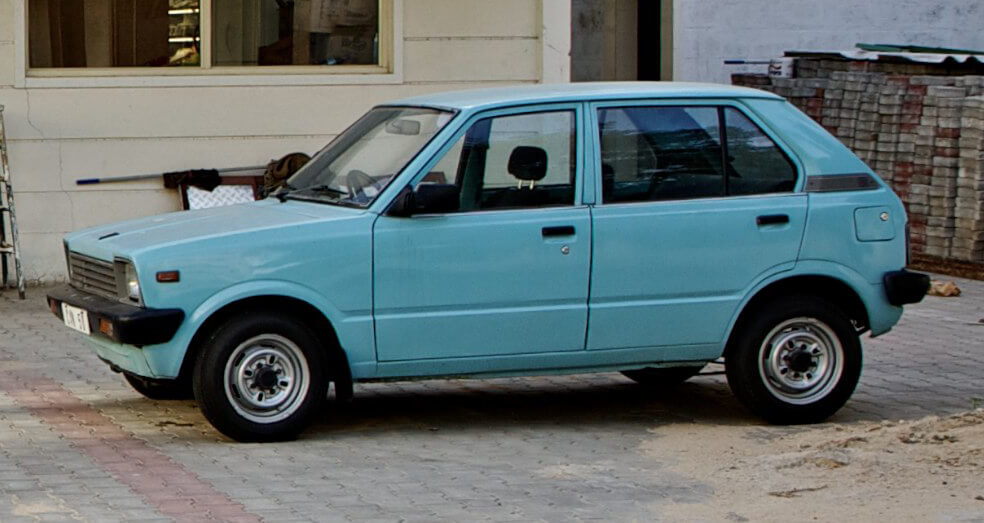The Indian automotive industry has come a long way from its inception in the 1940s to becoming the sixth largest in the world today with an annual production of nearly 4 million units. Early on, many foreign car manufacturers had identified India as a key market that had to be tapped, not for the consumer base but for the potential production capabilities the Indian industry could provide for the mass-production of their vehicles. Indian industrialists such as the Birlas and Tata also identified this potential and established their own companies for this reason. However, from the 1950s to well into the 1980s, the Indian automotive industry went through what is known as the “Dark Ages.” What caused the Dark Age and how did the country gain automotive independence? Read on to find out.
The Restriction
In the 1930s, cars were imported in small numbers to meet the small demand of the elites who could afford them. The 1940s saw the establishment of two Indian car manufacturers. Hindustan Motors was founded in 1942 by B.M. Birla while its longtime competitor, Premier Automobiles Limited (PAL), was founded in 1944. Both manufacturers worked with foreign car companies, with Hindustan Motors localizing Morris cars and Premier building Fiat and General Motors vehicles. Mahindra & Mahindra was setup in 1945 and was focused on building utility vehicles such as the Willys Jeep. From the 1940s to the mid-1950s, all cars built in India were built under license of these foreign manufacturers. Apart from the Indian manufacturers, foreign manufacturers, such as Ford, had taken to assembling their cars rather than manufacturing them in India, largely due to the low sales volumes present in the Indian market at the time.

The main idea behind setting up these manufacturing industries was to establish an indigenous vehicle manufacturing industry that would cater to the needs of the post-Independence Indian population. India’s industrial sector at this time was in its nascent stage with technology filtering through from the developed Western nations. To build expertise in automobile manufacturing, initial focus was placed on building an automotive component manufacturing industry that would support the mushrooming automobile industry. The Indian government opted for state control over the economy and the industry, in order to promote the development of a self-sufficient industry. For this reason, the government introduced an import substitution programme in 1953 to protect the development of the Indian industries from competing against cheaper products from the developed West and as a result, the import of fully built cars from foreign manufacturers was restricted. This programme, in addition to state control over the economy, led to the Indian automotive industry stagnating for nearly 30 years.
The 3 Decades
The nationalized economy of India prevented the private sector from seriously investing resources in the Indian automotive industry. In addition to this, the notorious License Raj system made it extremely difficult for interested foreign manufacturers to enter the Indian market. The economic policies became so restrictive that most manufacturers who were assembling their cars in India, decided to exit the Indian market, owing to the small market and the restrictive regulations that would have made it difficult to sustain a long-term manufacturing programme.

The exit of many foreign car manufacturers from India meant that the market was open to domination by indigenous manufacturers. And dominate they did. In this period of nationalisation, the Indian government decided what to produce and in what quantity. As such, Hindustan Motors and Premier Automobiles Limited received licenses from the government to manufacture cars and their components. Hindustan Motors launched the Ambassador in 1958 with PAL following with the launch of the Fiat 1100 Delite or Padmini in 1964 under permits from the government. However, it wasn’t smooth sailing for Hindustan Motors and PAL, either. Due to stringent import restrictions, these companies were forced to develop their own components, which invariably led to a fall in quality and high failure rates became common in these models. Car ownership was still out of reach of much of the population and those who could afford a car, were left to choose from just two models. Eventually, though, the purchasing power of the Indian middle class increased and so did their desire to own a car.
The Liberation
The period from the 1950s to the 1980s were dominated by the Ambassador and the Padmini. However, the winds of change were nigh, and India’s liberalization had begun in the 1980s, with the Indian government itself looking into the development of an affordable people’s car. Meanwhile, both Hindustan Motors and PAL introduced new models into their ageing lineup, with the launch of the Contessa and Fiat 118NE, respectively. The Indian government itself ventured into the automotive industry with the establishment of Maruti Udyog Limited, a 70-30 joint venture with Suzuki of Japan. The launch of the venerated Maruti 800 in 1983 brought a swift end to the years of stagnant domination of the Ambassadors and Padminis and ushered in a new age of the Indian automobile.

With the liberalization of the Indian economy and removal of the stringent import and licence restrictions, the Indian automotive industry finally became independent. The removal of investment restrictions saw Ford re-enter the Indian market in a joint-venture with Mahindra in 1995, while Honda also established itself in India in the same year. South Korean car maker, Hyundai, followed in 1996, and it was evident that India’s automotive industry would be vibrant in the coming years.
Honda and Ford introduced modern sedans aimed at replacing the Ambassador and Padmini, while Hyundai sought to challenge Maruti’s dominance in the entry-level market. Within a decade, the Indian automotive industry was transformed from a restricted, two car market to a competitive market with international car brands tailoring their products just for India. The Indian buyer today is spoilt for choice and can’t possibly imagine a time when all they could choose from was an Ambassador and a Padmini.

 ne big family!
ne big family!